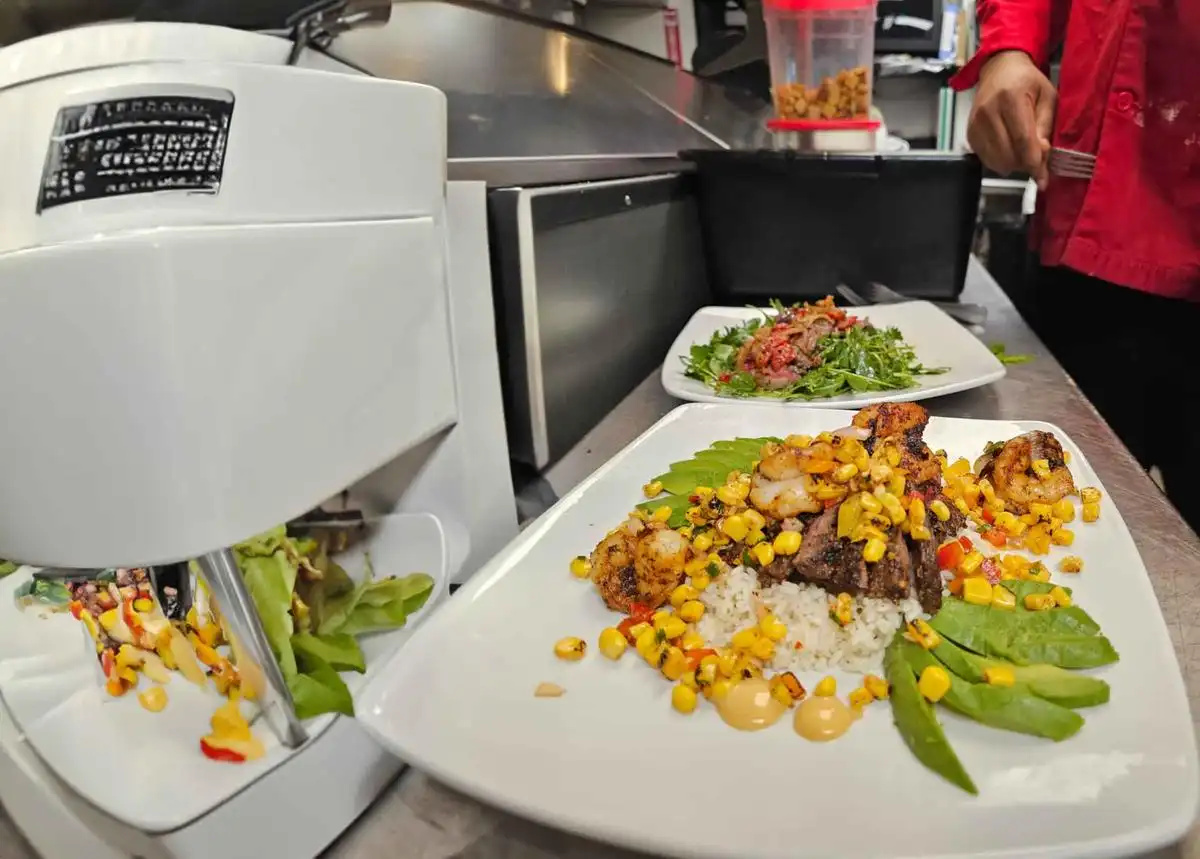5 common foods that can become harmful during preparation: How to cook them safely
In our everyday lives, food preparation is a task we often carry out without giving it sufficient attention. However, it is essential to understand that how we cook certain foods can significantly impact our health.
- David Parker
- May 12, 2025
- 1 Comments
- 2721 Views
Improper cooking practices can render otherwise healthy foods potentially harmful to our bodies. In this article, we want to highlight five common foods that can become harmful during preparation. We will explore the potential risks associated with improper cooking and share tips for cooking them safely.
In this quest for healthy and delicious cooking, we recommend two essential tools we will explore in depth: the Digital Food Thermometer and the Amish Friends No Waste recipe book. These resources can help you ensure safe and flavorful cooking experiences. Now, let us delve into the details of these five common foods and discover how to cook them safely to preserve our health and well-being.
1- Vegetable Oilsa
Vegetable oils are a fundamental element of our daily cooking. They are used for sautéing, frying, and seasoning our favorite dishes. However, it is crucial to understand that not all vegetable oils suit high-temperature cooking. When heated beyond their smoke point, oils can degrade and release harmful compounds such as trans fats and toxic aldehydes. These substances can adversely affect our health, increasing the risk of cardiovascular diseases, cancer, and other health issues.
To cook safely with vegetable oils, it is essential to choose suitable cooking oils. Oils with a high smoke point, such as extra virgin olive oil, avocado oil, and refined coconut oil, are preferable as they can withstand higher cooking temperatures without degrading. However, it is also essential to monitor the cooking temperature. A digital food thermometer is a valuable tool for measuring the oil temperature during cooking. This lets you know when the oil reaches its ideal cooking temperature and prevents overheating.
Before adding your ingredients, you can check the oil temperature using a digital thermometer. For frying, the ideal temperature varies depending on the food but generally falls between 160°C and 190°C (320°F and 375°F). By closely monitoring the temperature, you can avoid overheating the oil and thereby reduce the formation of harmful substances.
2- Grilled Meats
Grilled meats often come to mind when considering delicious and juicy dishes. However, high-temperature cooking of meats can pose health risks. When meat is exposed to high temperatures, potentially carcinogenic chemical compounds such as polycyclic aromatic hydrocarbons (PAHs) and heterocyclic amines (HCAs) can form.
The formation of these harmful compounds depends on several factors, including cooking temperature, cooking duration, and techniques used. To reduce the risks associated with cooking meats, here are some tips to consider.
Firstly, limit the consumption of grilled or charred meats. The blackened or charred parts of the meat contain higher amounts of PAHs and HCAs. It is better to favor gentler cooking methods such as steaming, slow cooking, or cooking at low oven temperatures. This helps reduce the formation of these harmful compounds.
Secondly, use a digital thermometer to measure the internal temperature of the meat. This allows you to know the doneness of the meat accurately and avoid overcooking it. For perfectly cooked and safe meats, following the internal temperature guidelines recommended by food safety experts is recommended. For example, for chicken, the internal temperature should reach at least 74°C (165°F), and for ground beef, it should get at least 71°C (160°F).
Lastly, the Amish Friends No Waste cookbook is a valuable resource for your culinary preparations. This cookbook offers creative and flavorful recipes that emphasize optimal ingredient utilization and reduce food waste. It will enable you to explore new ways of cooking your meats and maximize their flavor without compromising your health.
3- Fried Potatoes
Potatoes can produce acrylamide, a potentially harmful chemical substance, when fried at high temperatures. Acrylamide is formed through a chemical reaction between sugars and naturally occurring amino acids in potatoes when exposed to high temperatures.
Acrylamide has been associated with adverse health effects, including an increased cancer risk in laboratory animals. While evidence regarding the effects of acrylamide in humans is still limited, it is recommended to limit exposure to this substance.
Fortunately, there are healthier alternatives for cooking potatoes that reduce the formation of acrylamide. For example, steaming, baking at low temperatures, or microwaving require lower temperatures and cooking times, reducing acrylamide appearance.
A digital thermometer is recommended to ensure precise cooking and avoid excessive exposure to acrylamide. When frying potatoes, it is essential to monitor the temperature of the cooking oil. The digital thermometer will allow you to verify that the oil reaches the ideal frying temperature, typically around 180°C (356°F). This ensures that the potatoes are perfectly cooked while minimizing acrylamide formation.
The digital food thermometer is a versatile and practical tool in many other culinary preparations. It enables you to accurately measure the internal temperature of foods, which is crucial for safe and flavorful cooking.
Fried potatoes can contain acrylamide, a potentially harmful substance. To reduce exposure to this substance, healthier alternatives for cooking potatoes, such as steaming, baking at low temperatures, or microwaving, is recommended. A digital food thermometer lets you control the cooking temperature and achieve precise and delicious results. Do not forget to refer to the Amish Friends No Waste cookbook for creative and tasty ideas to prepare your potatoes healthy and balanced. Always consult a healthcare professional for personalized advice on your diet and health.
4- Contaminated Fish
Consuming fish contaminated with heavy metals, such as mercury, can pose health risks, particularly for pregnant women, young children, and sensitive individuals. Mercury accumulates in fish tissues due to water pollution and the food chain.
To minimize mercury exposure and enjoy the nutritional benefits of fish, choosing low-mercury varieties is recommended. Freshwater fish such as salmon, trout, and tilapia are generally considered safer. More extensive, predatory fish such as tuna and swordfish tend to accumulate higher levels of mercury and should be consumed in moderation.
When preparing fish, it is essential to ensure they are cooked sufficiently to eliminate bacteria and parasites while avoiding overcooking, which can result in a dry texture and loss of flavor. Using a digital food thermometer is an accurate way to check the doneness of fish. According to food safety guidelines, the internal temperature of fish should reach at least 63°C (145°F) to ensure proper cooking.
The digital food thermometer allows you to easily measure the temperature inside the fish without cutting into it. Insert the thermometer probe into the thickest part of the fish and read the displayed temperature. This assures you that your fish is safely cooked while maintaining its optimal texture and flavor.
5- Burned Food
When food is burned, it can produce polycyclic aromatic hydrocarbons (PAHs), chemical substances that form during the incomplete combustion of organic matter, such as fats and proteins present in food. PAHs are considered potentially hazardous to health, as some forms are carcinogenic.
It is essential to follow a few precautions to avoid excessive formation of PAHs when cooking food. Firstly, avoid overheating fats during cooking, as this can lead to charring and the construction of PAHs. Use cooking oils with a high smoke point and adjust the heat to maintain an appropriate cooking temperature.
The cooking temperature can be precisely controlled using a digital food thermometer. By monitoring the cooking temperature, you can avoid overheating, which could lead to food charring and the formation of PAHs.
It is essential to be aware of the risks associated with food preparation and take necessary measures for safe cooking. The digital food thermometer and the Amish Friends No Waste recipe book are valuable tools to assist you in this process. However, always consult a healthcare professional for specific advice based on your situation.

 | Unlock Success with Our Guide
| Unlock Success with Our Guide



This article highlights the potential risks associated with improper cooking practices and offers tips for cooking five common foods safely. It emphasizes the importance of choosing suitable cooking oils, using a digital food thermometer to monitor temperatures, and exploring healthier alternatives for certain dishes. The article also recommends the "Amish Friends No Waste" recipe book as a resource for creative and flavorful cooking while minimizing food waste. It provides valuable insights into preserving health and well-being through safe cooking practices.
yves
2023-09-02 05:40:18